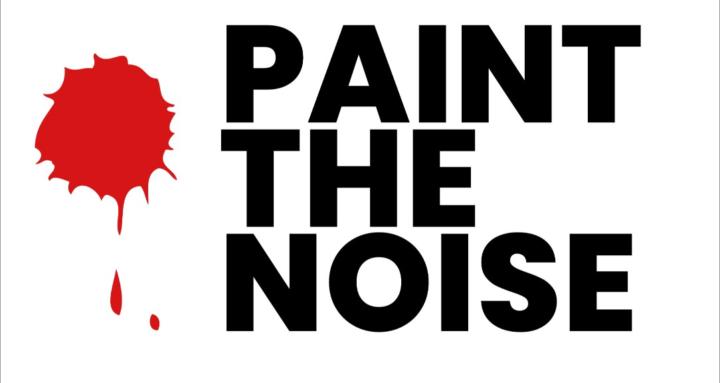21h • 📺 The PTN Insider Report
PTN INSIDER REPORT 010 / AI AS TEAM-MEMBER: CO-CREATION TOOLS REMAP CREATOR WORKFLOWS / September 27, 2025
📍 1. CONTEXT / INDUSTRY SHIFT
Creative workflows are being rewritten not by new distribution platforms, but by machines inside the studio. AI is no longer just a helper - it’s becoming a collaborator. Tools that generate, iterate, remix, and suggest are embedding themselves into design, video, and music pipelines.
The shift: humans are handing portions of ideation, drafting, and even “finishing touches” to AI agents.
That breaks the old model of tool → user → output.
Now it’s tool + user → continuous co-creation.
This matters for creators because when machines become teammates, everything changes:
• How credit and splits are assigned
• How teams are structured (humans, AI, hybrid)
• What skills stay valuable• What gatekeepers (platforms, labels) try to regulate
📂 2. CASE FOCUS / BREAKDOWN
We’ll look at three specific examples of this shift in motion:
• Adobe Firefly / Firefly Boards Adobe recently rolled out Firefly Boards globally, adding generative video models (e.g., Runway Aleph, Moonvalley Marey). (The Times of India) In this platform, creators can ideate, generate, remix, and co-iterate on images + video + effects in a unified “board” setting. (Adobe Blog) Adobe also integrates external models inside Firefly, giving creators multi-model choice inside the same workspace (OpenAI, Google, Runway, etc.). (Reuters)
• Udio (AI music co-creator)Udio allows creators to generate full songs (vocals + instrumentation) from text prompts in under a minute. (AI Musicpreneur) The team behind Udio includes former DeepMind / Google engineers, signaling a serious R&D pedigree. (AI Musicpreneur) Udio’s output can act as a “first draft” or scaffold, which creators then refine, remix, or layer over. That changes the role of the musician: from generator to curator + editor.
• Research / experimental systems: LACE / Hookpad AriaIn academia, tools like LACE are exploring “turn-taking vs parallel interaction modes” in human-AI co-creation (you give a prompt, AI gives a suggestion, you refine, back and forth) within Photoshop workflows. (arXiv). Hookpad Aria is a system that aids songwriters by filling gaps, harmonizing, continuing partial melodies, etc. — an AI assistant inside the compositional flow. (arXiv)
These examples show the spectrum: from high-polish product (Adobe, Udio) to experimental affordances (LACE, Aria).
📈 3. STRATEGIC PRINCIPLES REVEALED
Here are the framing rules emerging from this shift. Treat them like gravitational laws - you can’t ignore them.
Principle:
What It Means for Creators / Teams AI as collaborator, not replacement.
The best creative work often comes when humans + AI iterate together. You guide, refine, contest, and direct. Soft credit & fractional roles. When AI helps generate a melody or fills a verse, how do you assign credit?
Teams will debate micro-splits, attribution models, and AI-augmented contracts. Workflow architecture is power. The layout of prompts, feedback loops, layering, and versioning becomes a new competitive edge.
Controllability > raw output. The ability to steer, override, fine-tune, and “undo” is more valuable than simply getting a pretty first draft.
Regulation & ethics arc is accelerating Data provenance, IP claims, model audits, “deepfake guardrails” - these will define which tools survive.
✅ 4. TAKEAWAYS / ACTION STEPS
- Map where AI can plug into your existing pipeline — For visuals: insert Firefly Boards or prompt → sketch → human refinement.— For audio: use Udio or another text-to-music tool as a “first-draft engine,” then layer your signature.
2. Prototype new micro-roles inside your team — Who becomes “prompt architect,” “AI editor,” “curator,” “cleaner”? Try assigning small slices to experiment.
3. Build a versioning & “undo” safety net — Always track your own layers, retain human edits, avoid fully destructive modes.
4. Test attribution / “split engine” models early — If you use an AI to generate a verse, simulate how you’d divide royalties. Try internal contracts or legal sketches.
5. Trace data origin & guard against misuse — Ask tools: where was the training data from? Do they provide commercial safety guarantees? — Maintain a record of your prompt inputs/outputs in case of future challenge.
🔬 PTN LENS – Visual / Metaphor Framing
Think of your creative team evolving into a symphony of human + machine. The AI is not the full orchestra but a section: it can play motifs, suggest transitions, echo back your themes - but it needs your conductor’s hand.
The real art lies in how you balance the score, and that’s where a strong "moral compass" matters most when using "AI Tools." It guides how much weight you give to human input and how much you allow the AI to carry.
🔍 5. FINAL REFLECTION / CREATOR LENS
We’re no longer in the age of “tools augment my output.” We’re in the age of tools as team members. The question now isn’t “Can an AI do this task?” but “What portion of that task am I comfortable letting the AI own — and how much do I keep?”
In this tension lies both opportunity and risk. If you lean too far, you may lose identity. If you resist entirely, you’ll be left behind.
The creators who thrive will be those who navigate that boundary well — who make the AI feel like their ensemble, not their replacement.
📚 And that’s the PTN difference.
We don’t just analyze the system - we operate inside it, with our eyes wide open.
Right now, we play by the rules we’ve been given - the briefs, the splits, the backend grind. But everything we build - the workflows, the trust, the visibility - is designed to give us the position to change those rules.
We’re not just getting through the gates. We’re training creators to build their own floor once they’re in — and eventually, to redesign the whole building.
------------
🔗 SOURCE SIGNALS – Full Links
Qualcomm – Turns to Adobe GenStudio to streamline content creation with AI https://m.economictimes.com/magazines/panache/qualcomm-turns-to-adobe-genstudio-to-streamline-content-creation-with-ai/articleshow/124090462.cms
Times of India – Adobe launches Firefly Boards globally with new AI video models and features
https://timesofindia.indiatimes.com/technology/artificial-intelligence/adobe-launches-firefly-boards-globally-with-new-ai-video-models-and-features/articleshow/124153220.cms
AIMusicPreneur – Ex-Google engineers launch Udio, the AI music tool catching artists’ attention
https://www.aimusicpreneur.com/ai-tools-news/ex-google-engineers-found-udio-the-ai-music-tool-catching-artists-attention/
arXiv – LACE: Exploring Turn-Taking and Parallel Interaction Modes in Human-AI Co-Creation
arXiv – Hookpad Aria: A Copilot for Songwriters
1
1 comment
powered by

skool.com/ptn-pulse-6707
PTN Pulse is the starting point for serious creators in music and A/V. Real drops, real rhythm, no ego. Just signal... before the Broadcast.
Suggested communities
Powered by
